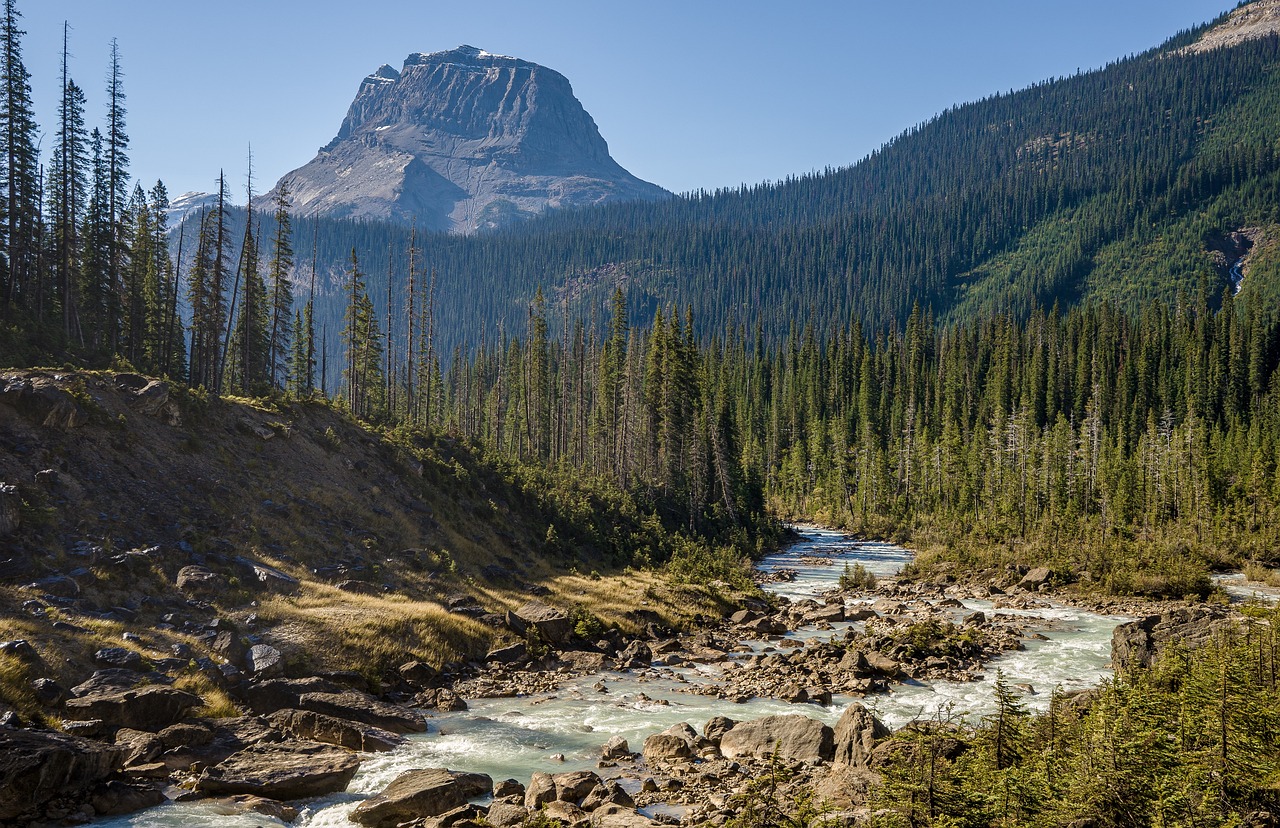Step into a world where towering mountains meet lush forests, and crystal-clear lakes reflect the beauty of the sky above. Join us on a journey to discover the wonders of British Columbia’s national parks, where nature’s majestic embrace awaits. In this post, we will delve into the enchanting landscapes, the vibrant wildlife, and the endless adventures that these parks hold, inviting you to escape into a realm of tranquility and awe-inspiring beauty. Let’s embark on this exploration together and let the magic of British Columbia’s national parks captivate our senses and hearts.

Overview of British Columbia’s National Parks
British Columbia is renowned for its stunning landscapes, diverse ecosystems, and abundance of outdoor recreational opportunities. The province is home to a network of national parks, each offering its own unique features and attractions. Let’s delve into the overview of British Columbia’s national parks to discover the beauty that awaits visitors.


Number and Geographical Distribution of National Parks
- Number of Parks: British Columbia boasts a total of 7 national parks, each showcasing the natural wonders of the region.
- Geographical Distribution:
- Pacific Rim National Park Reserve: Located on Vancouver Island, this park offers a blend of rugged coastline, temperate rainforests, and sandy beaches.
- Glacier National Park: Situated in the interior of BC, this park is a paradise for hikers with its towering peaks, glaciers, and lush valleys.
- Yoho National Park: Nestled in the Canadian Rockies, Yoho is home to stunning waterfalls, crystal-clear lakes, and dramatic mountain landscapes.
- Kootenay National Park: Known for its hot springs, rugged canyons, and diverse wildlife, Kootenay is a haven for nature lovers.
- Mount Revelstoke National Park: Explore alpine meadows, old-growth forests, and the iconic Meadows-in-the-Sky Parkway in this park.
- Gulf Islands National Park Reserve: A collection of picturesque islands in the Salish Sea, offering opportunities for kayaking, camping, and wildlife viewing.
- Gwaii Haanas National Park Reserve: Located in the remote Haida Gwaii archipelago, this park is rich in Haida culture, ancient villages, and pristine wilderness areas.

Unique Features of Each National Park
- Pacific Rim National Park Reserve:
- Key Features: Long Beach, West Coast Trail, Broken Group Islands.
- Activities: Surfing, hiking, wildlife viewing.
- Notable Wildlife: Gray whales, sea otters, bald eagles.
- Glacier National Park:
- Key Features: Rogers Pass, Illecillewaet Glacier, Asulkan Valley.
- Activities: Hiking, mountaineering, snowshoeing.
- Notable Wildlife: Mountain goats, grizzly bears, wolverines.
- Yoho National Park:
- Key Features: Takakkaw Falls, Emerald Lake, Burgess Shale.
- Activities: Sightseeing, hiking, skiing.
- Notable Wildlife: Black bears, elk, bighorn sheep.
- Kootenay National Park:
- Key Features: Radium Hot Springs, Vermilion River, Paint Pots.
- Activities: Soaking in hot springs, hiking, camping.
- Notable Wildlife: Bighorn sheep, mountain goats, cougars.
- Mount Revelstoke National Park:
- Key Features: Skunk Cabbage Boardwalk, Nels Nelsen Historic Area, Mount Revelstoke Summit Trail.
- Activities: Wildflower viewing, snowshoeing, picnicking.
- Notable Wildlife: Black bears, mule deer, red squirrels.
- Gulf Islands National Park Reserve:
- Key Features: Sidney Spit, Beaumont Marine Park, Russel Island.
- Activities: Kayaking, beachcombing, bird watching.
- Notable Wildlife: Orca whales, seals, sea lions.
- Gwaii Haanas National Park Reserve:
- Key Features: Haida Heritage Centre, SGang Gwaay, Burnaby Narrows.
- Activities: Cultural tours, kayaking, hiking.
- Notable Wildlife: Marbled murrelets, sea otters, humpback whales.
Whether you seek adventure in the mountains, tranquility by the sea, or cultural enrichment, British Columbia’s national parks offer something for everyone. Plan your next outdoor escapade and immerse yourself in the natural wonders of this picturesque province.

Activities and Attractions
British Columbia’s national parks offer a diverse range of activities and attractions that cater to visitors of all interests. From stunning landscapes to thrilling outdoor adventures, there is something for everyone to enjoy. Here, we delve into the various experiences that await you in these beautiful parks.
Hiking Trails
One of the most popular activities in British Columbia’s national parks is hiking. With a plethora of trails ranging from easy strolls to challenging treks, hikers of all levels can find a suitable path to explore. Some must-visit hiking trails include:
- West Coast Trail in Pacific Rim National Park Reserve
- Berg Lake Trail in Mount Robson Provincial Park
- Juan de Fuca Marine Trail in Juan de Fuca Provincial Park
Camping Sites
For nature enthusiasts looking to immerse themselves in the great outdoors, camping in British Columbia’s national parks is a fantastic option. Whether you prefer backcountry camping or car camping, there are numerous campgrounds to choose from. Popular camping sites include:
- Green Point Campground in Pacific Rim National Park Reserve
- Kinney Lake Campground in Mount Robson Provincial Park
- Alice Lake Campground in Alice Lake Provincial Park
Wildlife Viewing
British Columbia’s national parks are home to a diverse array of wildlife, offering visitors the chance to observe animals in their natural habitat. Keep an eye out for:
- Black bears in Gwaii Haanas National Park Reserve
- Bald eagles in Gulf Islands National Park Reserve
- Orcas in Gulf Islands National Park Reserve
Water Sports
With its vast coastline and numerous lakes, British Columbia is a paradise for water sports enthusiasts. Whether you enjoy kayaking, paddleboarding, or fishing, there are plenty of opportunities to get out on the water. Consider trying:
- Kayaking in Gulf Islands National Park Reserve
- Stand-up paddleboarding in Pacific Rim National Park Reserve
- Fishing in Mount Revelstoke National Park
Conservation Efforts and Environmental Importance
National parks are not only breathtaking natural wonders but also vital ecosystems that support a wide array of plant and animal species. Conservation efforts play a crucial role in protecting these habitats and preserving the biodiversity for future generations. Let’s delve into the specific measures in place to safeguard the environmental significance of national parks.

Sustainable Tourism Practices
Sustainable tourism practices are essential to minimize the environmental impact of visitors to national parks. Some examples of sustainable tourism initiatives include:
- Eco-friendly Lodging: Lodges and accommodations that prioritize energy efficiency and utilize renewable resources.
- Low-impact Activities: Promoting activities like hiking and wildlife viewing that minimize disturbance to the ecosystem.
Wildlife Conservation Programs
National parks often implement wildlife conservation programs to protect endangered species and maintain a balanced ecosystem. These programs may involve:
- Reintroduction of Species: Reintroducing species that were once endangered back into their natural habitat.
- Habitat Restoration: Restoring degraded habitats to provide suitable environments for wildlife to thrive.
Waste Management and Recycling
Effective waste management and recycling practices are crucial in national parks to prevent pollution and maintain the pristine environment. Some waste management strategies include:
- Recycling Stations: Providing easily accessible recycling stations for visitors to dispose of their waste properly.
- Composting Initiatives: Implementing composting programs to manage organic waste and reduce landfill usage.
Environmental Education and Outreach
Educating visitors about the importance of environmental conservation is key to fostering a culture of sustainability. National parks often offer:
- Guided Educational Tours: Informative tours led by park rangers to raise awareness about the ecosystem and conservation efforts.
- Interactive Programs: Workshops and activities that engage visitors in hands-on learning experiences about the environment.
Collaborations with Sustainable Brands
National parks frequently collaborate with sustainable brands to support conservation efforts. Partnerships with eco-conscious companies can lead to:
- Sustainable Product Offerings: Featuring eco-friendly products in park gift shops to promote responsible consumption.
- Corporate Sponsorships: Working with environmentally conscious brands to fund conservation projects within the park.
By implementing these conservation efforts and emphasizing the environmental importance of national parks, we can ensure these precious natural areas remain protected and thriving for generations to come. Let’s all work together to preserve these invaluable ecosystems for the future!

Preserving Nature’s Beauty
In conclusion, British Columbia’s national parks provide a stunning mix of natural beauty and environmental conservation, making them perfect havens for nature lovers. Visitors are encouraged to prioritize sustainability and show respect for the fragile ecosystems while experiencing the breathtaking wonders these parks have to offer.









I had no idea British Columbia had so many national parks! Definitely adding them to my travel bucket list now.
How about featuring stories of local communities’ involvement in conservation efforts in British Columbia’s national parks?
Highlighting the role of local communities in conservation efforts is a great idea! We’ll definitely consider it for future articles.
I’d love to see an article on the best camping spots within British Columbia’s national parks. Any chance of that in the future?
That’s great to hear! British Columbia’s national parks are truly stunning and offer a wide range of outdoor activities.
I once visited British Columbia’s national parks and it was a life-changing experience. Nature truly has a way of rejuvenating the soul.
Nature has a magical way of touching our lives. It’s wonderful to hear about your positive experience in the national parks.
I read somewhere that some of the national parks in British Columbia have unique wildlife. Can anyone share some interesting encounters?
Encountering wildlife in the national parks can be an incredible experience! Always remember to observe from a safe distance and respect their habitat.
I’ve heard there are debates about balancing tourism and conservation in national parks. It’s an interesting topic to explore further.
Finding the balance between promoting tourism and preserving the natural environment is indeed a complex issue that requires thoughtful consideration.
One of the potential pain points of visiting national parks could be dealing with unpredictable weather. Always be prepared!
Any suggestions for the best hiking trails in British Columbia’s national parks?
After reading this article, I feel inspired to start volunteering for conservation efforts in my local area.